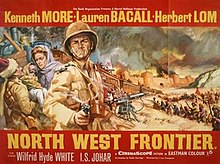
The Partition of India in 1947 was the change of political borders and the division of other assets that accompanied the dissolution of the British Raj in the Indian subcontinent and the creation of two independent dominions in South Asia: India and Pakistan. The Dominion of India is today the Republic of India, and the Dominion of Pakistan—which at the time comprised two regions lying on either side of India—is now the Islamic Republic of Pakistan and the People's Republic of Bangladesh. The partition was outlined in the Indian Independence Act 1947. The change of political borders notably included the division of two provinces of British India, Bengal and Punjab. The majority Muslim districts in these provinces were awarded to Pakistan and the majority non-Muslim to India. The other assets that were divided included the British Indian Army, the Royal Indian Navy, the Royal Indian Air Force, the Indian Civil Service, the railways, and the central treasury. Provisions for self-governing independent Pakistan and India legally came into existence at midnight on 14 and 15 August 1947 respectively.
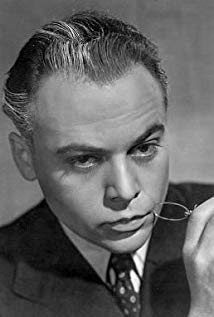
Herbert Charles Angelo Kuchačevič ze Schluderpacheru, known professionally as Herbert Lom, was a Czech-British actor with a career spanning over 60 years. His cool demeanour and precise, elegant elocution saw him cast as criminals or suave villains in his younger years, and professional men and nobles as he aged. Highly versatile, he also proved a skilled comic actor in The Pink Panther franchise, playing the beleaguered Chief Inspector Charles Dreyfus in seven films.

The Indian Rebellion of 1857 was a major uprising in India in 1857–58 against the rule of the British East India Company, which functioned as a sovereign power on behalf of the British Crown. The rebellion began on 10 May 1857 in the form of a mutiny of sepoys of the company's army in the garrison town of Meerut, 40 mi (64 km) northeast of Delhi. It then erupted into other mutinies and civilian rebellions chiefly in the upper Gangetic plain and central India, though incidents of revolt also occurred farther north and east. The rebellion posed a military threat to British power in that region, and was contained only with the rebels' defeat in Gwalior on 20 June 1858. On 1 November 1858, the British granted amnesty to all rebels not involved in murder, though they did not declare the hostilities to have formally ended until 8 July 1859.
The Pindaris were irregular military plunderers and foragers in 17th- through early 19th-century Indian subcontinent who accompanied initially the Mughal army, later the Maratha army, and finally on their own before being eliminated in the 1817–19 Pindari War. They were unpaid and their compensation was entirely the loot they plundered during wars and raids. They were mostly horsemen armed with spears and swords who would create chaos and deliver intelligence about the enemy positions to benefit the army they accompanied. The majority of their leaders were Muslims, but also had people of all classes and religions.
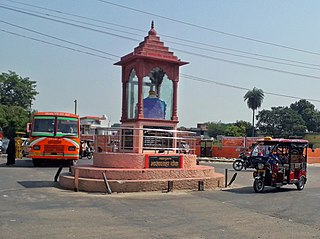
Budaun is a medieval city and headquarters of Budaun district, Uttar Pradesh, India. It is located about a mile east of the Sot river, and 27 km north of the river Ganges, in the Rohilkhand region of Uttar Pradesh. According to the 2011 census, it has a total population of 159,221, which is projected at 161,555 at present. Budaun rose to historical importance as the capital of the Delhi Sultanate for four years from 1210 CE to 1214 CE during the reign of Sultan Iltutmish. It was the most important post of Northern Frontier during Mughal reign. Budaun is a big market, historically famous and religiously important city. Budaun is 230 km south-east of New Delhi and 245 km north-west of Lucknow, both taking about 6 hours by road.

Kamla Nagar is a residential and commercial neighbourhood in North Delhi, India. It is one of Delhi's major shopping centres.
North West Frontier may refer to:
The Second Battle of Cawnpore was a battle of Indian Rebellion of 1857 that was decisive by thwarting the rebels' last chance to regain the initiative and to recapture the cities of Cawnpore and Lucknow.

Hari Singh Nalwa was Commander-in-chief of the Sikh Khalsa Fauj, the army of the Sikh Empire. He is known for his role in the conquests of Kasur, Sialkot, Attock, Multan, Kashmir, Peshawar and Jamrud. Hari Singh Nalwa was responsible for expanding the frontier of Sikh Empire to beyond the Indus River right up to the mouth of the Khyber Pass. At the time of his death, the western boundary of the empire was Jamrud.

Indra Sen Johar, better known as I. S. Johar, was an Indian actor, writer, producer and director, who excelled in comedic roles but is best known to international audiences for portraying Gasim in the epic film classic Lawrence of Arabia.

The Drum is a 1938 British Technicolor film based on the 1937 novel The Drum by A. E. W. Mason. The film was directed by Zoltan Korda and produced by Alexander Korda. It stars Sabu, Raymond Massey, Valerie Hobson, Roger Livesey and David Tree.

Jammu and Kashmir, also known as Kashmir and Jammu, was a princely state in a subsidiary alliance under British East India Company rule from 1846 to 1858 and under the paramountcy of the British Crown, from 1858 until the Partition of India in 1947, when it became a disputed territory, now administered by three countries: China, India, and Pakistan. The princely state was created after the First Anglo-Sikh War, when the East India Company, which had annexed the Kashmir Valley, from the Sikhs as war indemnity, then sold it to the Raja of Jammu, Gulab Singh, for rupees 75 lakhs.

The 5th Horse is an armoured regiment of the Pakistan Army. It was previously known as the 5th King Edward's Own Probyn's Horse, which was a regular cavalry regiment of the British Indian Army. It was formed in 1921 by the amalgamation of the 11th King Edward's Own Lancers (Probyn's Horse) and the 12th Cavalry.
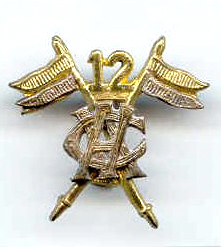
The 12th Cavalry Sam Browne's Cavalry (Frontier Force) is an armoured regiment of Pakistan Army. It was formed in the British Indian army in 1922 by the amalgamation of 22nd Sam Browne's Cavalry (Frontier Force) and 25th Cavalry (Frontier Force).
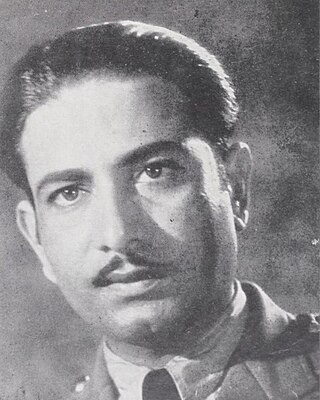
Hari Shivdasani (1909–1994) was an Indian character actor in Hindi cinema from 1930s to 1980s.

Ae Dil Hai Mushkil is a 2016 Indian Hindi-language musical romantic drama film directed, produced and written by Karan Johar under his banner Dharma Productions. The film stars Ranbir Kapoor, Anushka Sharma and Aishwarya Rai Bachchan in lead roles.

After the Partition of India, during October–November 1947 in the Jammu region of the princely state of Jammu and Kashmir, many Muslims were massacred and others driven away to West Punjab. The killings were carried out by extremist Hindus and Sikhs, aided and abetted by the forces of Maharaja Hari Singh. The activists of the Rashtriya Swayamsevak Sangh (RSS) played a key role in planning and executing the riots. An estimated 20,000–100,000 Muslims were massacred. Subsequently, many non-Muslims were massacred by Pakistani tribesmen, in the Mirpur region of today's Pakistani administered Kashmir, and also in the Rajouri area of Jammu division.
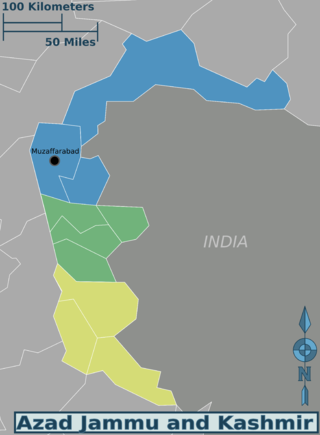
In spring 1947, an uprising against the Maharaja Hari Singh of Jammu and Kashmir broke out in the Poonch jagir, an area bordering the Rawalpindi district of West Punjab and the Hazara district of the North-West Frontier Province in the future Pakistan. It was driven by grievances such as high taxes, the Maharaja's neglect of World War veterans, and above all, Muslim nationalism with a desire to join Pakistan. The leader of the rebellion, Sardar Muhammad Ibrahim Khan, escaped to Lahore by the end of August 1947 and persuaded the Pakistani authorities to back the rebellion. In addition to the backing, Prime Minister Liaquat Ali Khan authorised an invasion of the state, by the ex-Indian National Army personnel in the south and a force led by Major Khurshid Anwar in the north. These invasions eventually led to the First Kashmir War fought between India and Pakistan, and the formation of Azad Kashmir provisional government. The Poonch jagir has since been divided across Azad Kashmir, administered by Pakistan and the state of Jammu and Kashmir, administered by India.
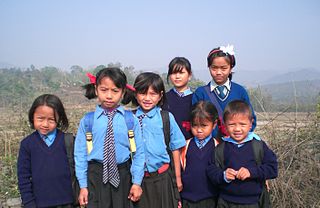
The hill tribes of Northeast India are hill people, mostly classified as Scheduled Tribes (STs), who live in the Northeast India region. This region has the largest proportion of scheduled tribes in the country.
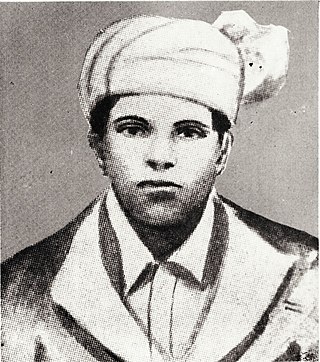
Hari Kishan Talwar was an Indian revolutionary from North-West Frontier Province. He is known mainly for his attempt to assassinate the Governor of Punjab, Sir Geoffrey de Montmorency. He was a young disciple of Bhagat Singh. He was hanged on 9 June 1931 in Mianwali Jail.
